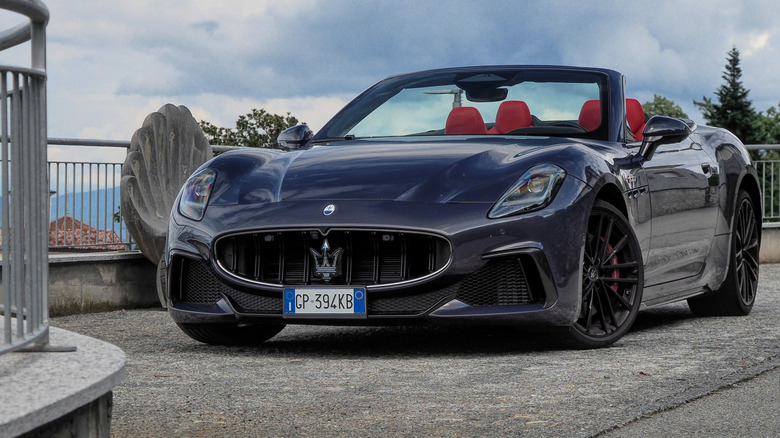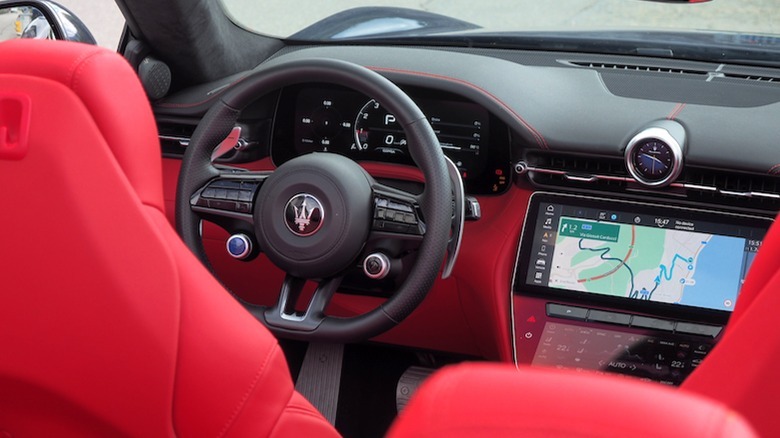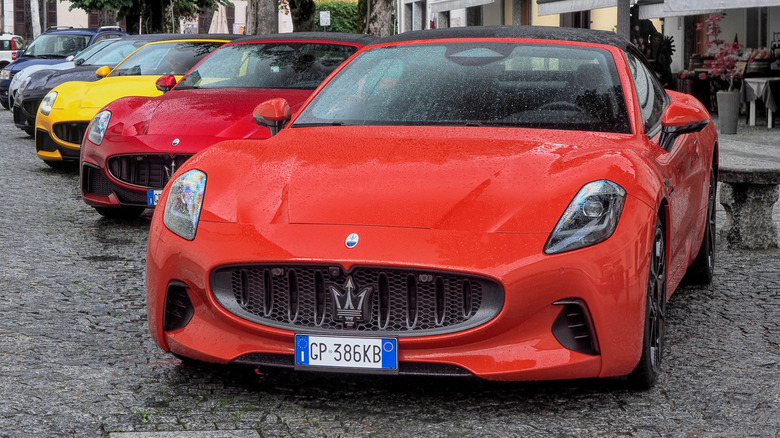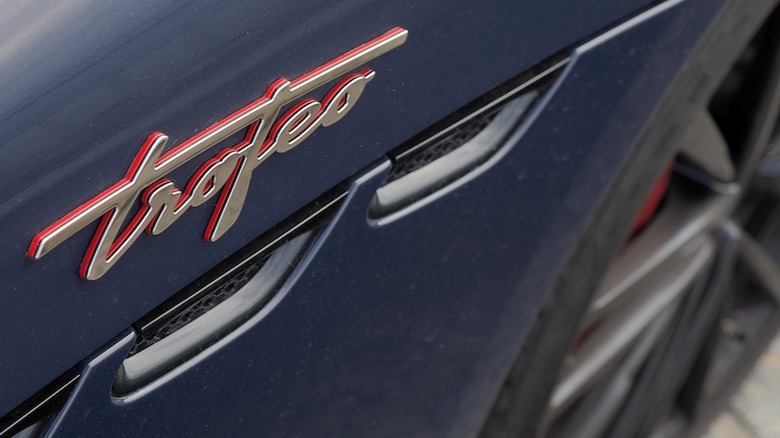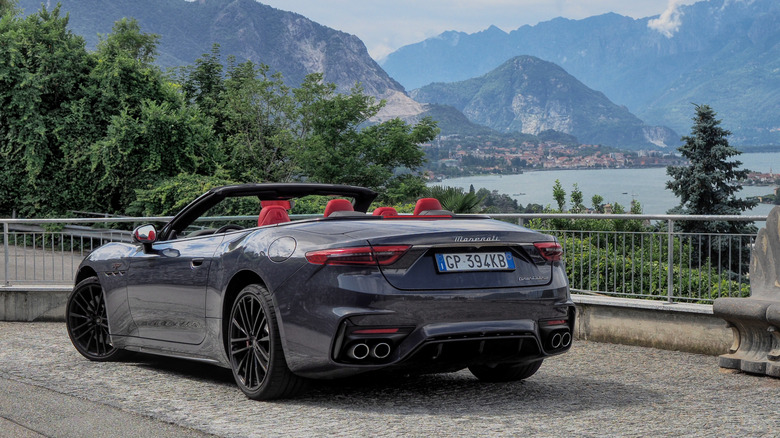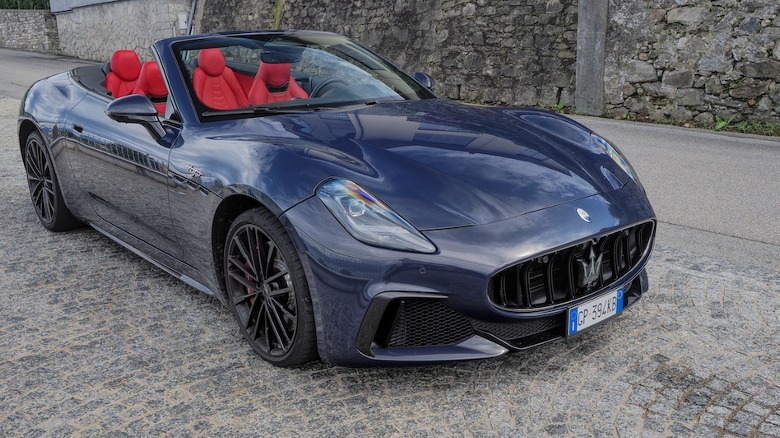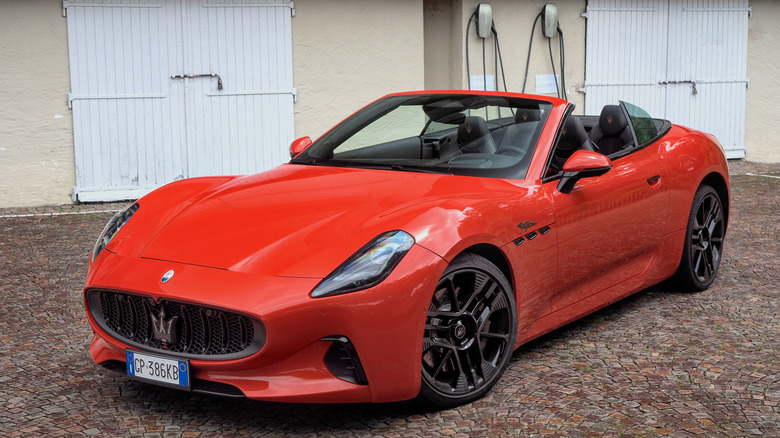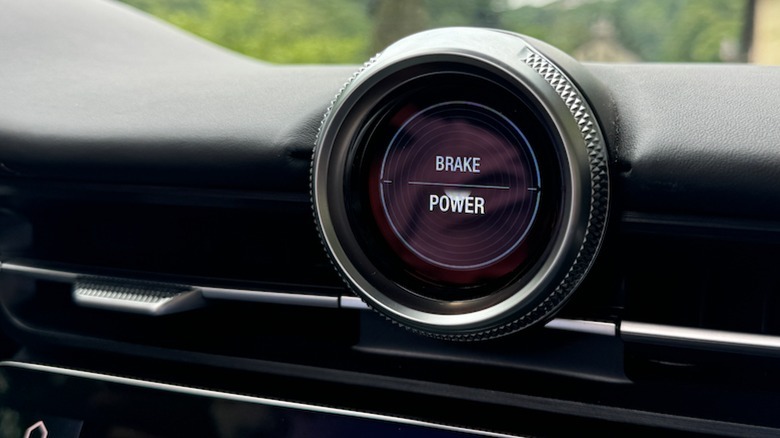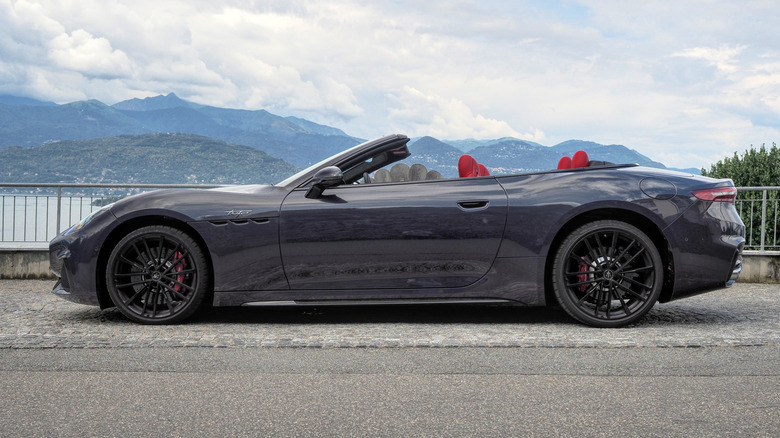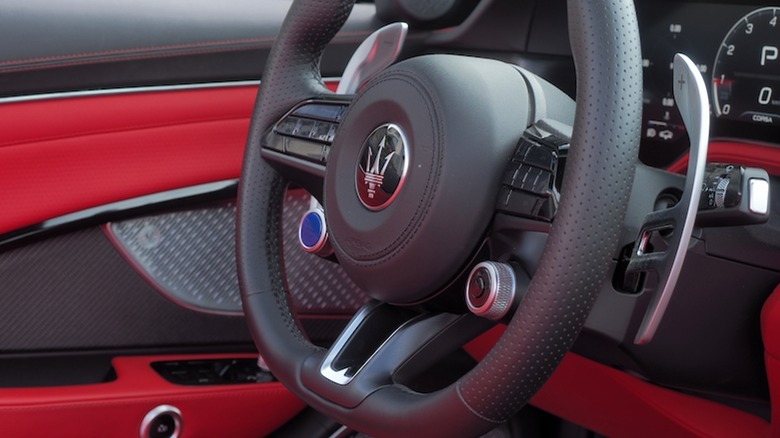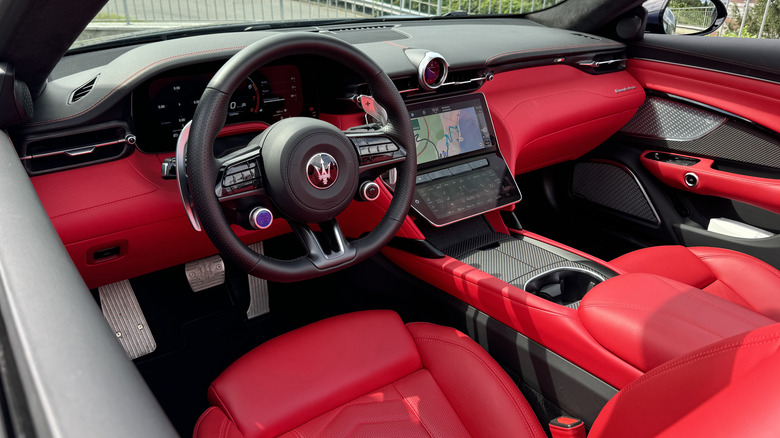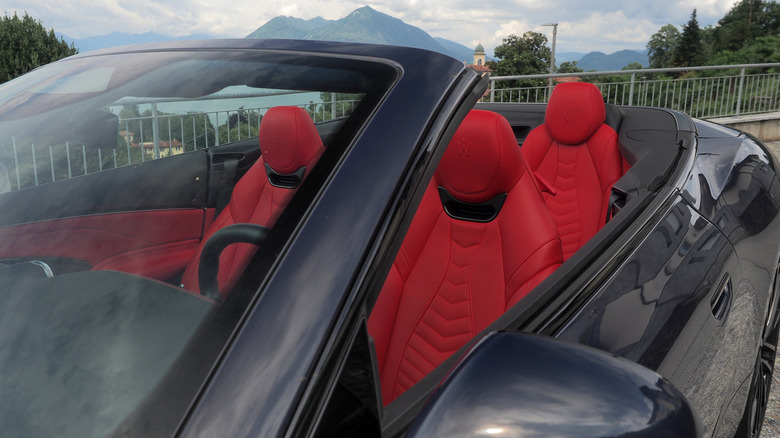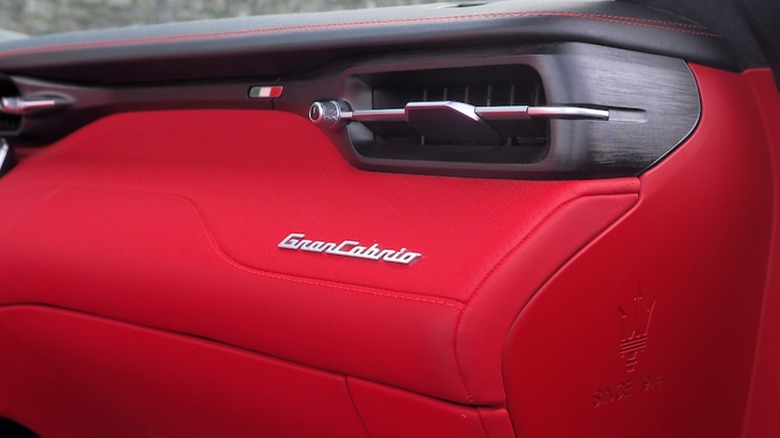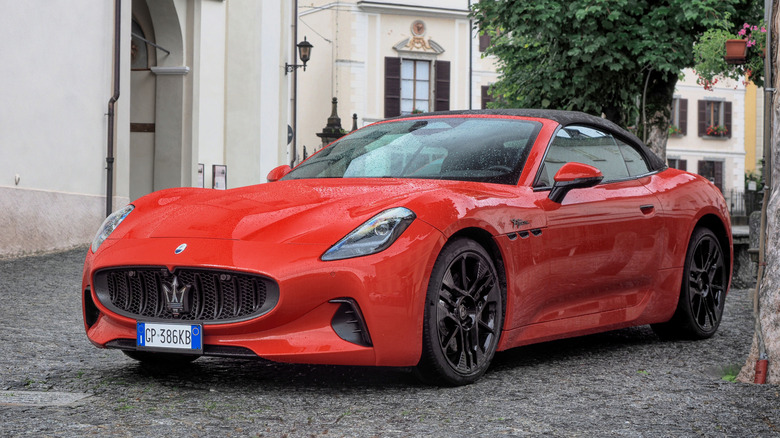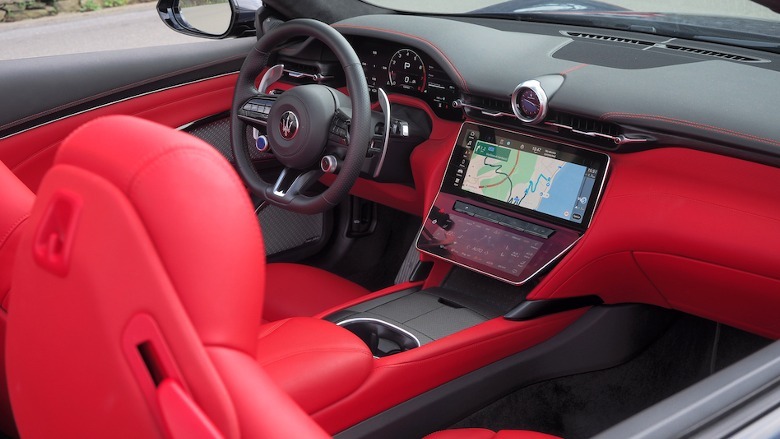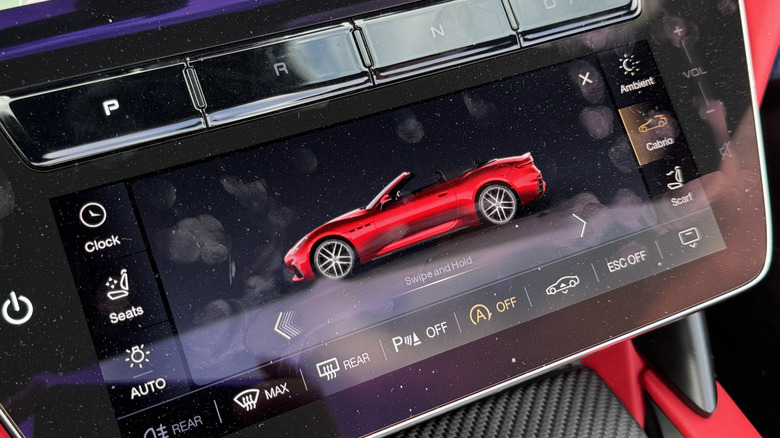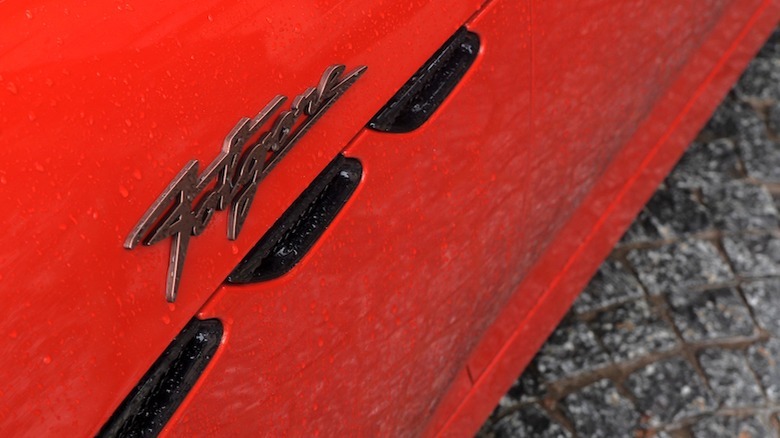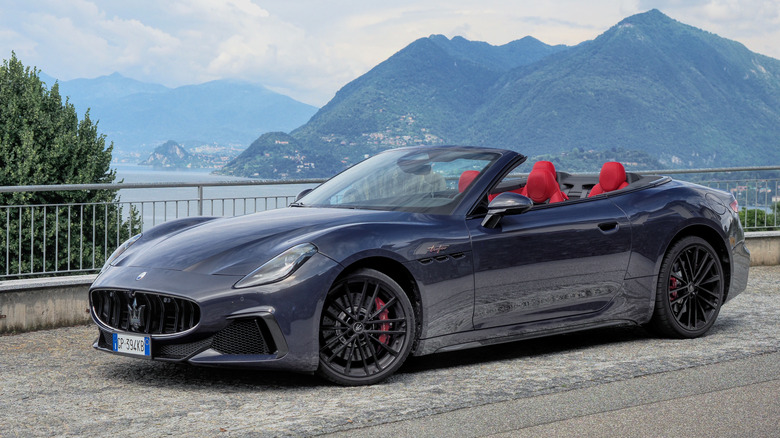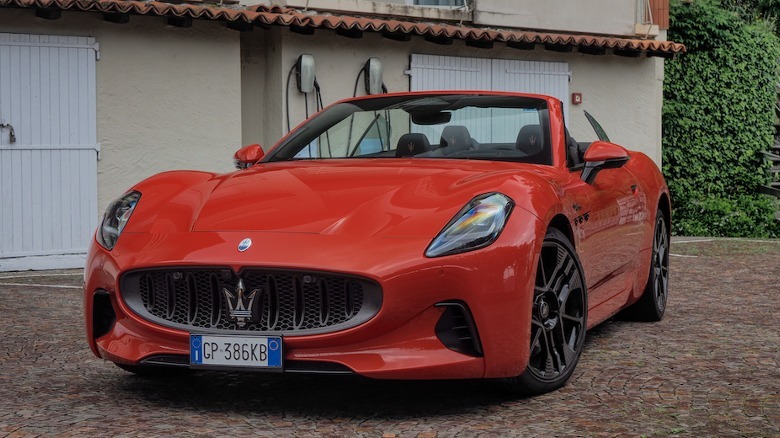Maserati GranCabrio First Drive: Is Folgore Or Trofeo The Better GT Convertible?
There's good and bad news, if you've been holding out for an all-electric convertible. On the plus side, Maserati is the perhaps-surprising first automaker to offer such a car in the U.S., and the 2025 GranCabrio Folgore doesn't stint on power, with its triple-motor setup delivering lashings of instantaneous torque. The downside is that you'll pay just north of $200k for the privilege.
Wait, though, because Maserati is hedging its bets. Alongside the Folgore is the 2024 GranCabrio Trofeo. It'll arrive a little sooner — in the U.S. this summer, rather than the EV's fall debut — and, priced from $192k, be a little cheaper. Though less powerful with its twin-turbo V6, it's also notably lighter.
The question, then, isn't just "Is the GranCabrio a good convertible grand tourer?" but whether EV bests gasoline at this ultra-luxury tipping point. As anyone following the electric transition will already know, the answer is rarely simple.
One GranCabrio, two drivetrains
More traditional of the two, the Trofeo gets Maserati's homegrown 3.0-liter twin-turbocharged V6 Nettuno gas engine. It's largely the same as we saw in the marvelous MC20 sports car, though with a slightly lower power output, and a wet rather than a dry sump.
As with the GranTurismo coupe, the Folgore is far more unusual. It combines three 300 kW radial motors — one on the front axle, two on the rear — for a total of 560 kW or 760 horsepower, and 995 lb-ft of torque. They're driven by an 800 volt architecture and a 92.5 kWh battery (of which 83 kW is usable); in temporary MaxBoost mode, power is nudged up to 610 kW, or 818 horsepower.
Both cars get double-wishbone front suspension and multi-link rear, with air springs and electronic damping control. There are Brembo brakes — six-piston fixed calipers at the front, four-piston at the rear — with staggered wheels, 20-inches at the front and 21-inches at the rear.
Only the eagle-eyed will spot the differences
What's interesting is that, despite the atypical drivetrain underneath, Maserati hasn't done much to distinguish the electric GranCabrio from the outside. Both share the same long, low hood, with prominent fender bulges — a nod to the automaker's earliest road cars, where open-wheel racers were given the barest, sleekest skin of metal to meet regulations — and gaping grilles.
Beyond the fender badging, the intercooler intakes in the lower bumper are probably the biggest distinguishing factor. Present on the gas GranCabrio, they're absent on the EV, since its cooling needs are different. The Folgore also wears slightly more aero-minded wheels.
Sizable hips lead to a sleek rear, not vastly removed from the old convertible, in fact. That evolution was intentional, according to Klaus Busse, Global Head of Maserati Design: the GranTurismo and GranCabrio are the automaker's "North Star products," and so a more restrained touch than had been applied to, say, the striking MC20 Cielo convertible was imposed.
The electric Folgore suits droptop duties perfectly
Up in the hairpins and switchbacks that cross-stitch the mountains above Milan, where Maserati hosted SlashGear to drive both gas and electric flavors of the new GranCabrio, the name of the game is point, squirt, slow, repeat. Blind corners, on roads often barely wider than the broad flanks of the car itself, add an air of danger (or, at the very least, offer to introduce you rapidly and nose-first to a Fiat driver with an apparent death wish) as you flick between bursts of acceleration followed by sharp braking.
While the Trofeo's whining V6 and quartet of tailpipes barking on the downshifts sounds the part up in those hills, it's the Folgore and its surfeit of torque which seems better suited overall. There's never a point where you're left wanting for power, while the aggressive regenerative braking — its appetites controlled through four levels with the long, metal paddles on the steering wheel — allows for surprisingly effective modulation of that pace with just the accelerator.
Throw in the torque vectoring twin motors on the rear axle, and the Folgore pivots and darts in ways you'd not expect for a car that weighs 5,249 pounds. The back end kicks around with merry, yet controlled, eagerness, while the low-mounted battery pack — and the ensuing low center of gravity — leaves the electric GranCabrio feeling more planted and composed than its gasoline counterpart.
Maserati's Nettuno V6 is a thing of glory
That's not to say Maserati's Nettuno gas engine is lacking, and ICE purists will — once they're over the absence of a V8's extra two cylinders — find plenty to recommend in the GranCabrio Trofeo. For a start, it's considerably lighter than the Folgore: a mere 4,316 pounds in comparison. It means the power disadvantage — 542 horsepower versus the EV's 760 horsepower — is less of an issue, since there's simply less car to throw around. At 3.4 seconds 0-60 mph, the Trofeo is officially 0.6 seconds slower than the Folgore, but in practice it's hard to notice.
Maserati could've fitted a V8 on the GranCabrio's engine bay, albeit not while maintaining the low swoop of the two-door's sinuous hood. That it didn't was a decision based on dynamics more than aesthetics, though: the smaller, lighter V6 can be positioned behind the front axle, helping avoid a nose-heavy feeling (though even then, the Trofeo's 51/49 weight distribution can't quite match the Folgore's 50/50). On balance — pun intended — I'll take the more nimble car than whatever an eight cylinder GranCabrio might've been like.
I have no complaints, too, about the Trofeo's eight-speed transmission. Stab the chunky PRND buttons on the dashboard — a rare physical control among Maserati's touchscreen-first approach almost everywhere else — and the automatic whips through the gears with suitable eagerness. Clacking the outsize paddles takes over the job, though, given the most aggressive Corsa mode's willingness to hold lower ratios into higher revs, most of the time it's unnecessary.
No losing sight of the Grand Tourer ethos
Neither car is unduly stiff, even in Sport mode. There's a tendency for performance cars to come with rock hard dampers and back-punishing suspension, all in the name of feeling more aggressive. It's a strategy Maserati has thankfully opted out of, in favor of a more GT-suited compliance.
Not body roll, or anything anywhere near cumbersome, but even with the air springs and dampers in their firmest setting (which can be adjusted independent of drive mode, with a dedicated button in the center of the mode dial on the steering wheel) the GranCabrio eases sinuously about corners rather than crashing through them.
You sacrifice some of the MC20's knife-sharp linearity, but in return you get a car that's far more suited to daily-driver duties. Convenience features like a standard nose-lift (for escaping tall or steep curbs) also lean into that idea of all-round refinement.
A lavish cabin with room for four
Inside, the days of finding Chrysler switchgear in your Maserati are thankfully gone. The GranCabrio's cabin is basically identical to that of the GranTurismo, with a sculpted digital instrument panel for the driver and a pair of center touchscreens embedded in swathes of leather and carbon fiber.
For the Trofeo, hide is standard. The Folgore can be had with Econyl inserts, recycled nylon from fishing nets that Maserati is using laser-cutting to puncture minutely. It's a technique borrowed from the fashion world, apparently, as is the electro-welded patterning on the dashboard trim. The result definitely leans on the "outlandish Italian clothing" end of the design scale, though final glitz levels depend on whether you pick a darker, more traditional color scheme, or one of the brighter reds or other finishes.
There's room for adults in the rear, albeit preferably not too tall and willing to be snug. The trunk is a low, wide space, not tiny but definitely constrained; you can make it slightly taller, by temporarily sacrificing the ability to drop the roof.
Well insulated from the outside world
As for that fabric soft top, while the most obvious advantage is that it looks pretty darn good up or down, the bigger improvement is the sound insulation. The multi-layered assembly makes for a surprisingly hushed cabin: not quite coupe levels of isolation, but far closer than you might expect.
Roof up or down, an air scarf system can gust warm air at the back of your neck. It makes the GranCabrio far more usable, even in cold weather, though with the sun beating down it seemed a shame not to be able to blow cold air, too. After all, the front seats are ventilated as well as heated.
Maserati's dual touchscreen infotainment looks good, with multimedia and navigation up top, while climate control and vehicle settings are shown on the lower panel. The UI can be a little overwhelming in places, though there's wireless Apple CarPlay and Android Auto if you'd rather project from your smartphone. In a neat touch, the circular clock — actually a round display — shows live power and regen information in the Folgore.
The three GranCabrio caveats
I have three main qualms with the new GranCabrio, two shared by both models, and one by the Folgore alone. The first is the price, which is — from $192,000 for the Trofeo, and from $205,000 for the Folgore, both plus $1,995 destination — considerable. It puts the grand touring convertible up against some serious competition.
Then there's the control for the drop-top roof, which involves tapping a button on the lower center touchscreen, dragging your fingertip across from the center either left (to raise the roof) or right (to lower it), and holding it there. It sounds straightforward, but it's a needlessly long gesture, and near-impossible to do without looking down at the screen first (and keeping an eye on it, too, as it's easy for your fingertip to wander in the 14-16 seconds it takes for the hood to rise or fall). A button would be so, so much easier, even if Maserati insists that touch-first is better overall.
Finally, and for the electric Folgore alone, there's range. 233 miles is okay, just about, but far from outstanding. In an age where thousand-horsepower Lucid EVs are capable of more than double that, Maserati's distance between charges feels on the low side, particularly given the GranCabrio's price tag.
Maserati GranCabrio verdict
What the Lucid can't do, though, is drop its top. In fact, convertible electric cars are pretty much an untapped market at the moment, and while the GranCabrio Folgore may be priced out of consideration for the majority of EV drivers hoping to go roofless, that doesn't make what it offers any less alluring.
Were it my money, the Folgore would be my pick of the two GranCabrios. Yes, I'd be limited in range — though a 270 kW 800 volt DC fast charge rate means up to 48 miles added in around five minutes — but the experience between chargers just feels sweeter. Great lashings of torque, plus that clever vectoring at the rear wheels, added to the refinement of the well-insulated roof and hushed drivetrain, all set a fresh benchmark for an open-roof grand tourer.
The GranCabrio Trofeo, in contrast, feels like a more traditional vision of GT driving. No bad thing, certainly, and what's striking is that — with their similar pricing and near-identical styling — your buying decision comes down to how ready to go electric you are. That flexibility, echoing what we saw with the MC20, distinguishes Maserati well, at a time when most automakers seem to be pushing relentlessly to EV-only regardless of whether their customers are actually in a position to do the same.
With more range, the 2025 GranCabrio Folgore would be the obvious "better" car, here. That it hasn't quite achieved that yet, though, merely means we get to enjoy the howl of the Trofeo a little longer, as Maserati hedges its bets. That doesn't seem like a terribly bad consolation, even if the writing for ICE is written, in Italian, on the wall.
